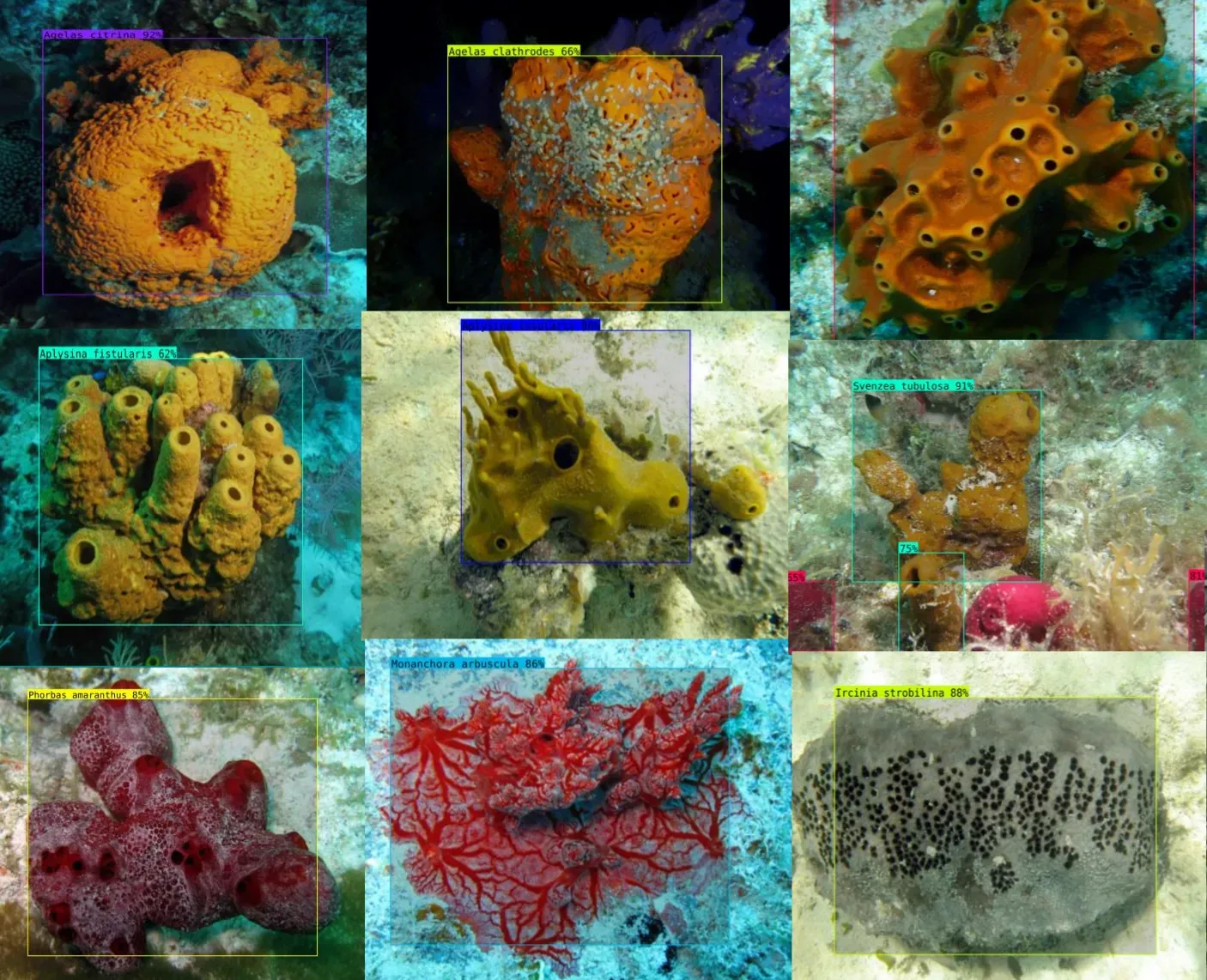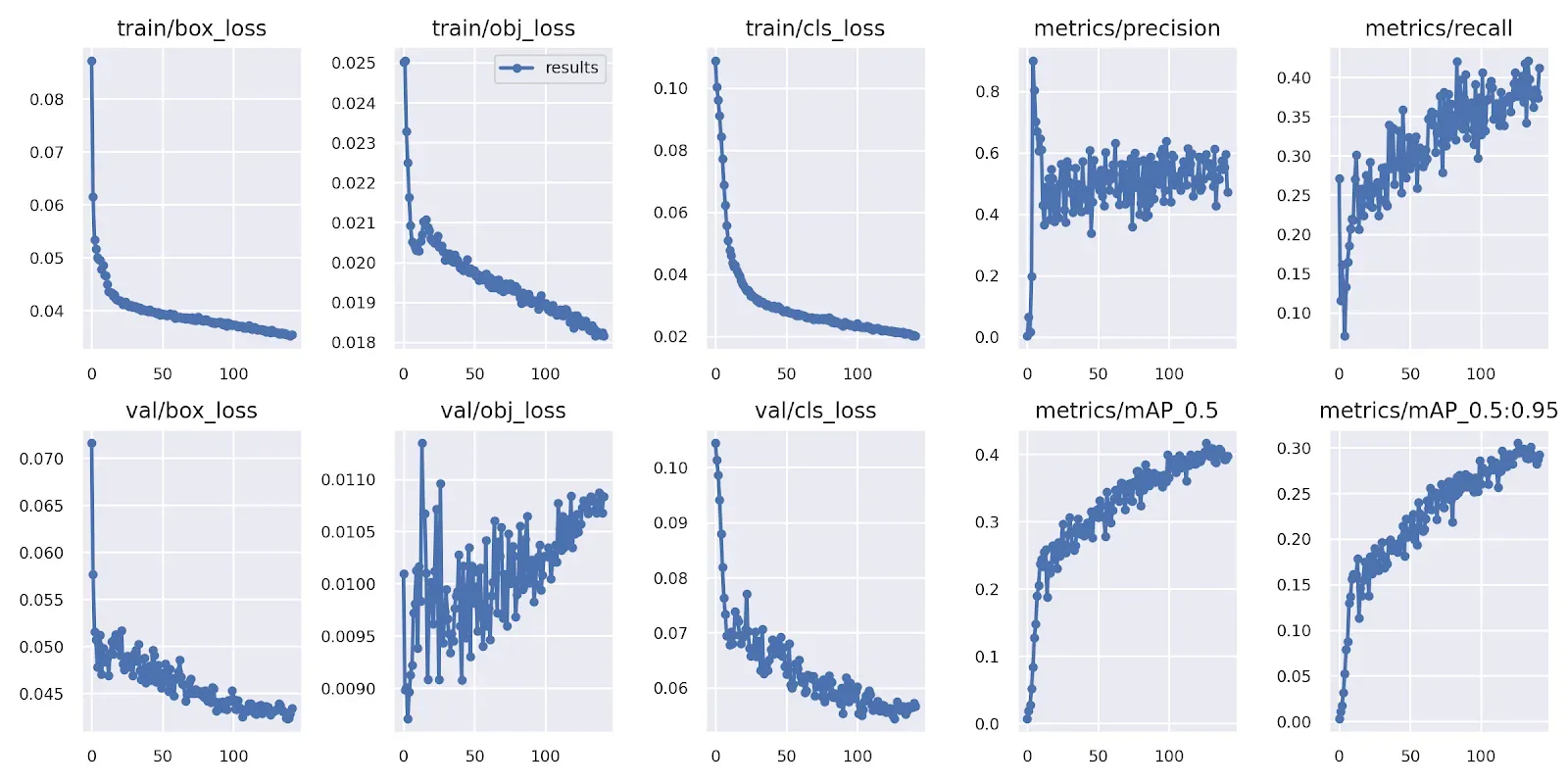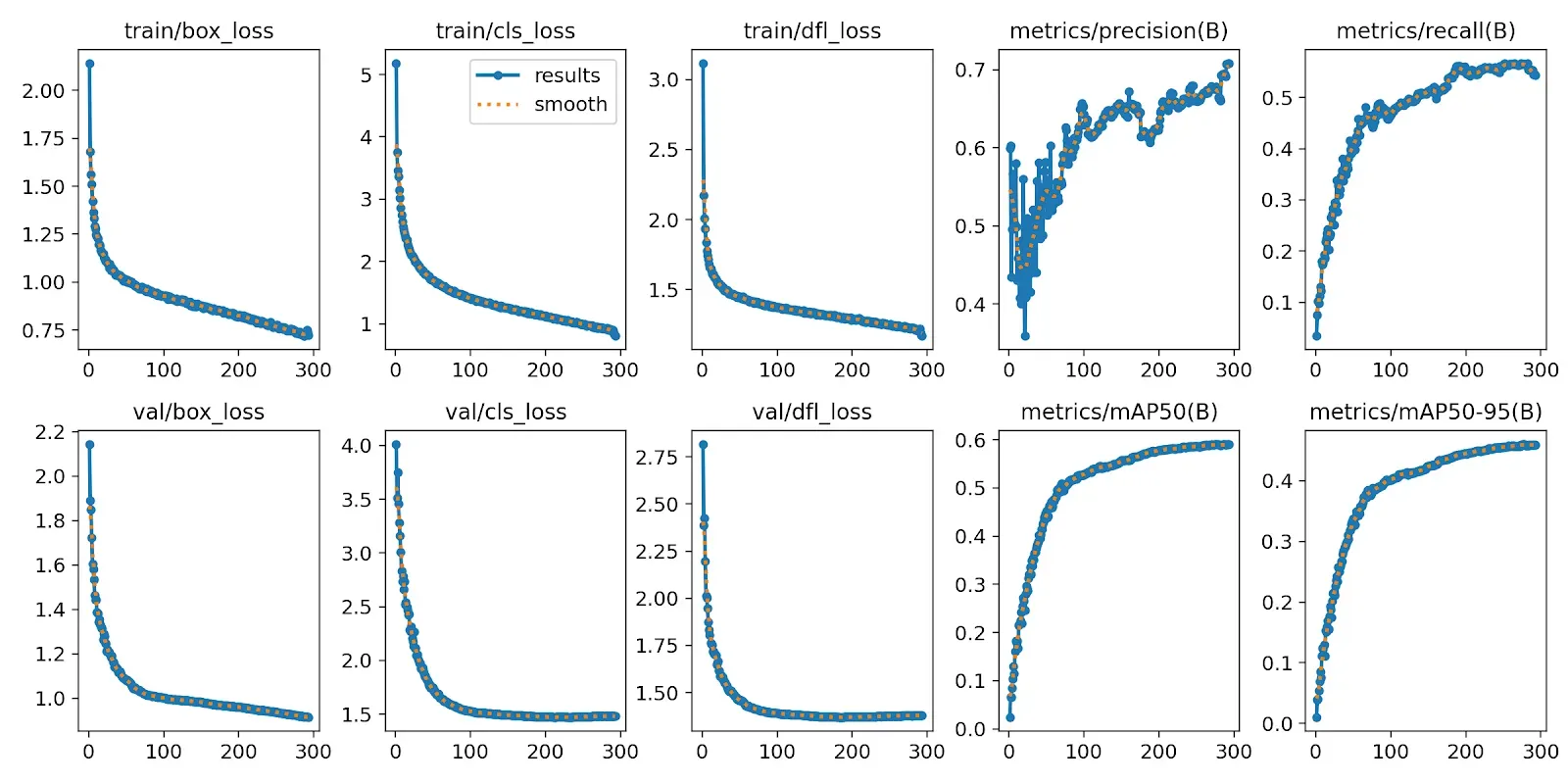
This post was contributed to the Roboflow blog by Andy Portalatin.
For my master’s thesis at the Department of Biology at the University of Puerto Rico at Mayaguez, I decided to develop a computer vision model capable of detecting and classifying marine sponges (Phylum Porifera) that share complex and amorphous features.
This led to the “Porifera Classifier”, a trained model that can identify up to 126 species of marine sponges, benchmarking significant contributions to oceanographic research and ecological conservation strategies.
In this post, you will learn about marine sponges, the challenges faced when studying these organisms, and how to address these limitations using a YOLOv8 object detection model made with Roboflow.
You can use the marine sponge model trained for the thesis on Roboflow Universe.
Classifying Marine Sponges: The Challenges
Marine sponges are known to be an integral part of underwater ecosystems. They provide essential functions such as nutrient cycling, water filtration, and species-specific niches. Marine sponges can thrive in various temperature zones and depths, even adapting to freshwater environments.
Beyond their ecological significance, sponges possess valuable natural compounds with proven applications in medicine, evolutionary analysis, commercial resources, and many other fields. Nonetheless, marine sponges face escalating threats from climate change, overfishing, coastal development, and land-based runoff, to different types of pollution. Accurate identification and classification are thus critical for a better understanding of their roles and implementing conservation strategies.
Researchers and conservationists have a hard time identifying marine sponges using traditional methods. Morphological identification is time-consuming and resource-intensive because it involves intricate microscopic examinations and expert taxonomic knowledge. There aren't that many trained taxonomists for sponge identification, which leads to delayed processes and unidentified specimens, especially for deep sea specimens.
Logistical challenges accompany research field expeditions, which require specialized equipment, trained divers, and lots of money. Furthermore, subjective interpretations of morphological characteristics can make it hard to identify species, affecting the accuracy of conservation assessments. A lot of traditional methods also use destructive sampling, so long-term monitoring of sponge populations is limited.
It is also possible to miss cryptic species that share similar characteristics or misclassify them, which affects biodiversity assessments. Moreover, in the early life stages of sponges, especially juveniles without distinctive features, we have trouble distinguishing species, which hinders our understanding of their life cycles and population dynamics. Henceforth, to advance ecological studies and conservation, we need innovative approaches to sponge identification.

Various marine sponge species are identified and classified by the Porifera Classifier, illustrating the complexity and amorphous physical characteristics between species.
Using Object Detection to Identify Marine Sponges
By incorporating advanced deep learning models like YOLOv8 with platforms like Roboflow, we can create custom models capable of rapidly recognizing intricate features at the intersection of technology and marine biology.
The YOLOv8 algorithm, when trained with relevant data, accurately detects marine sponges in real-time, automating the labor-intensive identification process and reducing specimen backlogs.
By using remote sensing platforms, researchers can study sponge biodiversity, distribution patterns, and ecological interactions using the Porifera Classifier developed by YOLOv8.
Beyond its scientific applications, the Porifera Classifier is essential for monitoring sponge populations under anthropogenic threats like global warming. By streamlining data prep and model deployment, Roboflow enhances YOLOv8's efficiency, which ensures High-Quality Porifera Classifier training.
The following sections describe the development process and offer recommendations based on our observations.
Using Roboflow for Annotating, Pre-Processing, and Augmenting Datasets
We made the Porifera Classifier dataset for identifying marine sponges. This dataset shows Roboflow's effectiveness for annotating, pre-processing, and augmenting marine sponge datasets.
Our dataset was compiled from open-source platforms such as The Sponge Guide and GBIF, which was meticulously organized and enhanced using Roboflow. In addition to renaming images, categorizing them, and preparing the dataset for machine learning models, the Roboflow platform also helped us rename images based on taxonomic classification.
In Roboflow, bounding box and polygon annotations helped us identify objects of interest. Smart labeling tools like Segment Anything made the labeling process faster. Through the platform's preprocessing and augmentation capabilities, we made a rich variety of examples for use in training a model. Through the combination of the diverse dataset and Roboflow's advanced features, we were able to build an accurate and reliable marine sponge recognition and classification model.
The dataset contains 8,958 labeled images representing 126 marine sponge species, which were used to train and evaluate two models. This first experimental model augmented the first 8,958 images to increase dataset size and generalize better across a broader range of species, resulting in 27,188 augmented images with 41.6% mAP, 59.5% Precision, and 39.4% Recall.
The first model was trained using the following augmentations: ±15° horizontal and vertical flip, 90° clockwise and counterclockwise rotation, ±45° rotation, 0-20% zoom crop, ±15° horizontal and vertical shear, ±25% saturation, ±15% brightness, ± 20% exposure, blur up to 0.5px, and noise up to 3% of pixels.
For the second model, we gathered more images of underrepresented classes and modified some repeated images before training, namely, rotating the picture 90° to capture a different angle of the image during model training. This provided us with a dataset of 16,915 images and final scores of 59.0% mAP, 65.8% Precision, and 56.6% Recall.
The results show that augmentations impact deep learning model performance significantly. We can see the training graphs for both models below, and the second model shows a significant improvement in learning. Additionally, the first model was trained using Roboflow 2.0 Object Detection (Fast), whereas the second model was trained using Roboflow 3.0 Object Detection (Fast). This could have also been a reason for the performance improvement.


Future Applications of the Porifera Classifier
Experimental results show the algorithm could have a notable impact on oceanographic exploration and conservation efforts. Researchers will be able to test hypotheses deeper and gain new insights into marine sponge ecology with rapid and accurate identification and classification of Porifera species.
Porifera biodiversity can be understood better by using the algorithm for species distribution modeling, which will improve conservation strategies and monitor efforts against climate change impacts on marine sponges.
Looking ahead, the Porifera Classifier is envisioned to play a pivotal role in environmental monitoring and assessment. Real-time data on marine sponge populations and habitats will be available via integration with underwater imaging systems, including remotely operated platforms. Invasive species, pollution, and habitat degradation are all threats that need to be detected and addressed so that marine ecosystems can be preserved
Additionally, you can use the model with the Python programming language. Given the relative ease of use compared to other languages, our choice of Python enhances the ability for citizen science initiatives to be implemented. Such initiatives could empower individuals to actively contribute to marine sponge research and conservation.
Porifera Classifier's integration with bio-inspired robotics and soft robotics holds promise for ethical and sustainable marine science research. In this forward-looking application, a soft robotic arm intelligently interacts with marine sponges, minimizing damage to organisms and their environment. It's a great example of how artificial intelligence can be used to advance marine research, environmental monitoring, and conservation.
Cite this Post
Use the following entry to cite this post in your research:
Contributing Writer. (Dec 19, 2023). Detecting Complex and Amorphous Features of Marine Sponges. Roboflow Blog: https://blog.roboflow.com/marine-sponge-identification/
